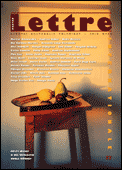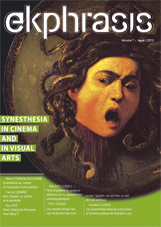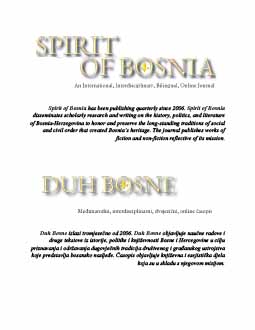




Keywords: synesthesia; vibration; poetic; symbolic prostheses; painting; reality effect; cinema; haptic vision; distance vision; poetry; figural
Before cinema, theoreticians have established a relationship between the notes of the scale and colors, based on the idea of vibration. Kandinsky questioned the relationship between arts and used the principle of synesthesia. But films that were inspired by painting have also raised the question of synesthesia. The director S.M. Eisenstein, who was also a painter, tried to make color sensations by musical vibrations in his films. Christian Metz, who analyzed the impression of reality in film, emphasized the “stereocinetical” effect in the 7th Art. He said that the movement produced the impression of reality. For the viewer, what is tangible is real. The Italian semiotician Gianfranco Bettettini showed that that audience filled the lack of sensoriality by making some symbolic prostheses. Thus the cinema, in relationship with painting, tries to perceive the sense of touch. The philosopher Gilles Deleuze has questioned the proximity in painting using the example of Francis Bacon. He showed how the eye could have two functions, one optical, corresponding to distance vision, the other haptic, or tactile vision. Jacques Aumont and Pascal Bonitzer adapted some of Deleuze’s ideas to cinema, in what we can find the same difference between optical and haptical vision. For some filmakers (Kurosawa, Dreams, Paradjanov, Sayat Nova, Tsvet Granata, or Achik Kerib), there is a synesthetic dimension given by the haptic vision. By demonstration of synesthesia, cinema joins poetry, the figural becomes close to the poetic.
More...
Keywords: Romanian cinema; food; eating; taste; sensation; spectator; synesthesia
Without trying to identify a sub-genre in the Romanian contemporary cinema and without searching for the so called “cooking films”, this paper is analyzing the usage of food and eating in the “new wave” films of the Romanian cinema. Treating food and food consumption as a social practice and using the concept of food semiotics, the author presents some of the most important usages of eating in the contemporary Romanian cinema.
More...
Keywords: introduction; synesthesia
Quoiqu’elles aient déjà une histoire prestigieuse, les synesthésies continuent de fasciner et de solliciter à la fois les artistes et les théoriciens. Malgré les nombreuses recherches dont elles ont fait l’objet, mentionnées souvent dans ce qui va suivre, il reste encore des recoins plus ou moins sombres à explorer, des solutions à apporter, ainsi que des ouvertures à faire.
More...
Keywords: Michelangelo Antonioni; Red Desert; colours; painting; senses; synesthesia; Paul Cézanne; attentive perception; hypersensitivity; hallucinations
I analyze Michelangelo Antonioni’s Red Desert through the main character’s way of perceiving the world. Giuliana is depressed and this particular state changes her relations to the world: her senses are overdeveloped and she has trouble understanding the complex information they are permanently sending her. The colours are the first clue of Giuliana’s specific relation with the world. Antonioni creates a new reality by painting each element of the set which echoes with Giuliana’s interiority. The film appeals to the spectators to develop an attentive kind of perception in order to connect with the main character and to share, for a time, her vision of the world. The sight is a central issue in Red Desert. Giuliana compensates her difficulty to understand the changing world by remarkable strength and power in her act of seeing. I analyze her specific relation with the objects she sees with the help of Maurice Merleau-Ponty’s work about synesthesia and Gilles Deleuze’s time-image. The sight is not the only sense Giuliana develops trying to reconnect with the reality. She has a hypersensitivity which creates immediate desires she cannot control. She really feels every detail. Even the words become a reality she can touch. Her hypersensitivity leads her to hallucinate in the film. The spectator shares with her a hallucination which melts sounds and colours in a synesthesic moment. Finally, I consider the famous scene of the little girl on the pink beach. This scene comes from the story Giuliana tells her sick son and represents her way of understanding the world. Colours circulate in a dreamlike landscape where a mysterious singing voice emerges.
More...
Keywords: Gherasim Luca; cubomanie; synesthesia; french contemporary poetry; romanian artist; mixture of genres and fields
Gherasim Luca’s work as a poet and as an artist was greatly influenced by Victor Brauner and Ilarie Voronca’s theories. His work was displayed to the viewer in the exhibition “Présentation de graphies colorées de cubomanies et d’objets”, that took place in Bucarest, in January 1945. Through this exhibition, both Gherasim Luca – with his cubomanie or the “Objets Objectivement Offerts” – and Dolfi Trost will lay stress on the desire to create new images bias a new creating process, of which the surrealist coincidence and automatism take a great place. This practice and the poetry lead one to reconsider the notion of composition, which can be understood in its literal meaning (to put down together and so to re-assemble), and to wonder what articulation can be made between sight, hearing and touch. By means of a comparative reading of samples taken from Gherasim Luca’s cubomanies after the 1960’s and his texts published in France after 1945, we will have to establish how the cubomanie and the poetical writing interact and communicate, how it partakes of a world and life reinvention, but also how this practice manages to recreate to some extent a contemplation of the self-fragmentation, and is also a solution to trigger the numerous reflects of the reality, in his works.
More...
Keywords: synesthetic experience; popular art; rigid conceptions; medium
Whether we talk about genuine “synesthesia” in the context of scientific research or just exploring general realms of perception, it still remains a fascinating phenomenon. This article focuses on works that unify the senses, drawing a somewhat historical sketch, a commentary upon the thin line between highbrow art and popular forms of art. The compelling “synesthetic experience” can also be found in the uneven mixture of image and words, thus suggesting different points of departure for further projects.
More...
Keywords: Emanuele Coccia; Giorgio Agamben; Bernard Stiegler; bulimia; sensitive; sensibility; withdrawal; hearing-contact; touch
Alain Cavalier is one of the most important French moviemakers. He began his career with committed movies (Le Combat dans l’île, L’Insoumis) in accordance with the rules of the “image-mouvement” as Deleuze analyzed them. He then changed his way in the ’70s and his cinema became one of sensitivity. The present article aims at following this evolution. First, we will study how the characters, at best, consider the world to be an objective reality impervious to sensitivity and, at worst, make it an organic matter. Secondly, we will see how Cavalier alters the relation to the real. To do so, he uses a double withdrawal. He first has his characters get out of their environment so that they act like “flying fish” (Bernard Stiegler), which is the only way to let things happen as phenomena. Then he presses the characters out of themselves – Emmanuel Coccia speaks of an “ex-tase” – and has them reach a sensitive life. With this double movement, in which the film director partakes, the senses are given more and more consideration. Although sight remains the main sense through which reality is apprehended, it is nonetheless challenged by “hearingcontact” and by touch. Whispers convey a connection with the audience of an almost physical nature while the hand, getting into the screen, experiences the consistency of things.
More...
Keywords: Norman Manea; proustianism; synesthesia; trauma; stream of memory
This essay analyzes the innovative way in which Norman Manea redimensions the categories of Proustianism (involuntary memory, stream of consciousness) and begins with the investigation of a few representative short stories from the well-known volume October, Eight O’Clock. The close-reading follows the subjective narrative but undetermined voice, along an epic journey in which the protagonist regains his memory through a synesthetic and also traumatic adaptation to reality.
More...
Keywords: synesthesia; taste; anti-aisthesis; disgust; painting
For Schopenhauer, the opposite of the sublime is the “charming and attractive” (das Reizende – in the translation of R. B. Haldane and J. Kemp). Objects of art – especially paintings and sculptures – should never excite the appetite for the things they are representing. Especially the representations of erotic scenes are supposed to “arouse” the Will. But there is also another possibility to affect the Will through the “negative species of the charming or exciting” (das Negativ-Reizende), method which is even more reprehensible; “this is the disgusting or the loathsome” (das Ekelhafte). Since all the senses are involved, this emotion could be considered as the perfect realization of synesthesia. It constitutes de facto the negation of all aisthesis (perception in the sense of aesthetic contemplation), but merely since the experience of most overwhelming emotion, anti-asithesis precedes – as a consequence of the fall from Paradise – all kind of aesthetics meaning distinction by taste. The relationship between the Apollonian and Dionysian established by Nietzsche is almost the first theoretical approach taking into consideration the phenomenon of anti-aisthesis. Ancored in the tradition of nietzschean aesthetics, philosophers like Levinas, Sartre, Bourdieu or Deleuze continue to develop the existential analysis of works of art and literature.
More...
Keywords: synesthesia; cinema; olfaction; perfume
This paper shows the synesthetic possibilities of cinema, focusing on the manner in which olfactory sensations are rendered by moving visual images. Some techniques are identified and described: the verbal discourse (common to literature and cinema), the showing of scented substances, the act of breathing and the close ups of the nose, the accelerations and slow motions, the association between image and music, etc. The main example discussed in the paper is Tom Tykwer’s movie: Perfume: the Story of a Murderer (2006).
More...
Keywords: Poland; education; religion; Jasna Gora monastery; doctors; human laws; euthanasia; abortions; Catholic professionals; declaration; Education Ministry;
A right-wing fringe blogger ignites debate in Poland over the role of personal religious faith in public education.
More...
Keywords: Ukraine; Russia; Serbia; Kazakhstan; election; parliament; Crimea; economy; sanctions; murder; Olympics; Vladimir Putin; Stefanovic; Almaty; Ulyukayev; strike; police; teachers; schools; education; investors;
Plus, Kazakhstan inches closer to ‘Olympic Gold’ and millions could lack a voice in Ukraine’s next parliament. Around the Bloc is TOL's daily digest of the important, the trivial, the tragic, the weird, and the sober from its coverage region.
More...
Keywords: Aral sea; Uzbekistan; Kazakhstan; Tajikistan; Kyrgyzstan; gasoline; Petrol; Russia; NASA; environment; Bulgaria; explosion; Azerbaijan; Ismayilova; media; Ukraine;
Plus, an investigative reporter faces charges in Baku and NASA marks a milestone in Aral Sea shrinking. Around the Bloc is TOL's daily digest of the important, the trivial, the tragic, the weird, and the sober from its coverage region.
More...
Keywords: Latvia; Bulgaria; Ukraine; Russia; Mongolia; Belarus; Kazakhstan; mine; Rio Tinto; election; Borisov; Vladimir Putin; Eurasian Economic Union;
Plus, Latvia’s pro-Russian party fares well but will likely stay out of government and Putin signs law to green-light post-Soviet trading bloc. Around the Bloc is TOL's daily digest of the important, the trivial, the tragic, the weird, and the sober from its coverage region.
More...
Keywords: Ukraine; legislation; Petro Poroshenko; EU; Russia; Donetsk; Luhansk regions;
Analysis: Kyiv’s concessions to Ukraine’s rebel regions simply enshrine in law an order that has existed for years.
More...
Keywords: Bulgaria; elections; politics; parliament; energy; KTB; Vassilev; banks;
Amid multiplying crises, who will govern Bulgaria after October’s election is a less important question than how.
More...